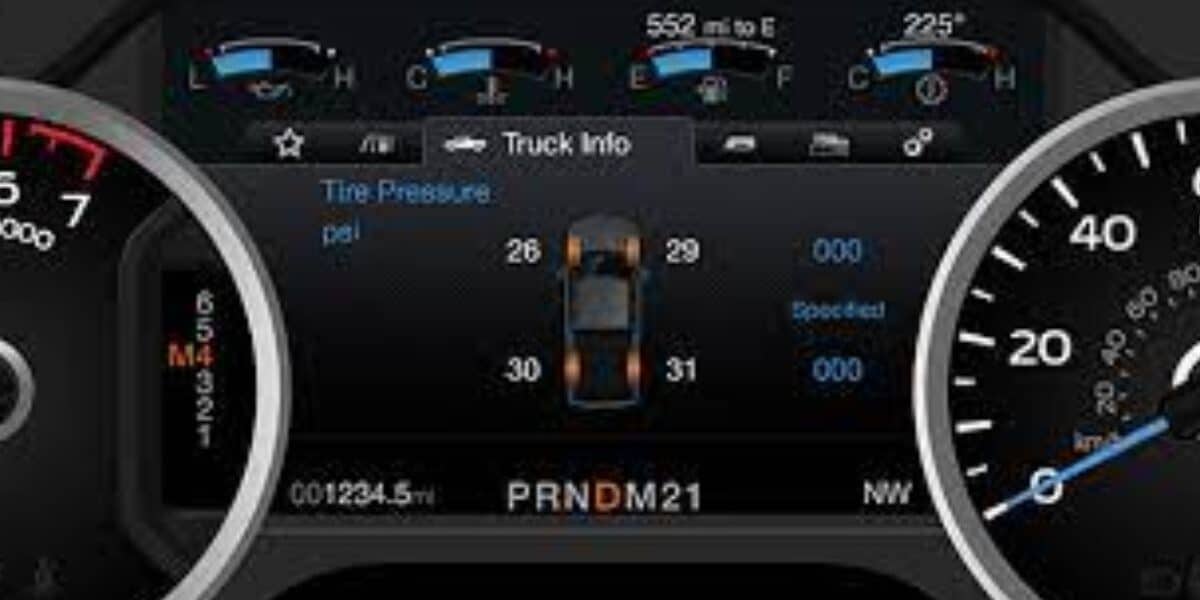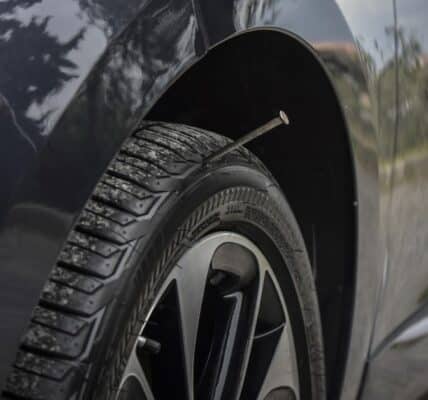As a regular driver and car owner, encountering that pesky TPMS fault warning on my dashboard was like navigating through a maze without a map. Confusing, frustrating, and downright annoying. But after dealing with it a few times, I’ve learned a thing or two about what it means and how to tackle it. Let me break it down for you in simple terms, just like I wish someone had done for me.
Quick Answer: Don’t Skip it if you are in a hurry!!
What Does Tire Pressure Sensor or TPMS Fault Mean? A TPMS fault means there’s an issue with your tire pressure monitoring system, which could indicate low battery, sensor malfunction, or calibration error. Check tire pressure manually, inspect sensors for damage, and reset the system; if the fault persists, consult a mechanic for further diagnosis and repair.
So, picture this: you’re cruising down the road, minding your own business, when suddenly, that little TPMS light pops up out of nowhere. What does it mean? Well, in a nutshell, it’s your car’s way of saying, “Hey, something’s not right with your tire pressure.”
What are the Causes of Tire Pressure Sensor (TPMS) Fault?
Now, before you panic and pull over thinking your tires are about to explode, take a deep breath. More often than not, it’s not a major catastrophe. Here are a few things that TPMS fault could be trying to tell you, based on my experiences:
Low Battery Blues:
Just like your TV remote, TPMS sensors have batteries too, and guess what? They can run out of juice. When that happens, they might start acting up, giving you false readings or no readings at all. So, if you’ve had your car for a while, it might be time to replace those sensor batteries.
Silly Sensor Malfunctions:
Sometimes, those sensors decide to go on strike for no apparent reason. Maybe they got bumped or jostled during a tire change, or maybe they’re just having a bad day. Either way, if one of them goes kaput, it can throw the whole system out of whack.
Calibration Confusion:
Ever had your computer act wonky after an update? Well, TPMS systems can be like that too. If your tires were recently rotated or replaced, the TPMS might need to be recalibrated to get back on track.
Tech Troubles:
Believe it or not, your fancy TPMS system can sometimes get tripped up by other electronic gadgets nearby. It’s like when your Wi-Fi signal gets wonky because someone’s using the microwave. So, if you’ve got a lot of tech gadgets in your car, they might be causing interference.
Real Tire Problems:
Last but not least, that TPMS light could actually be trying to warn you about a real tire issue, like a leak or a puncture. So, it’s always a good idea to give your tires a once-over to make sure everything’s shipshape.
How to Fix a Tire Pressure Sensor Fault: Solutions
Now, here’s the good news: dealing with TPMS faults isn’t rocket science. In fact, there are a few simple steps you can take to get things back to normal:
- Check Your Tire Pressure: Grab yourself a trusty tire pressure gauge (you can pick one up at any auto parts store) and give your tires a quick once-over. If any of them are looking a little deflated, it might be time to break out the air compressor.
- Inspect Those Sensors: Take a peek at each tire’s valve stem and make sure the sensors look intact. If any of them are damaged or corroded, they might need to be replaced.
- Give It a Reset: Some cars let you reset the TPMS system right from the dashboard. Check your owner’s manual for instructions on how to do it.
- Replace the Culprit: If all else fails and that TPMS light refuses to go away, it might be time to bite the bullet and replace the faulty sensor. Don’t worry, it’s a relatively simple fix that any mechanic can handle.
At the end of the day, dealing with TPMS faults is just one of those annoying little quirks of car ownership. But armed with a little knowledge and a dash of patience, you’ll be back on the road in no time, TPMS light-free. Let’s take some questions of people that are faced with these issues in their life.
Frequently Asked Questions:
1. Do I Really Need to Replace the TPMS?
Ah, the age-old question. If your TPMS light is on, does it mean you need to rush out and replace the whole sensor? Not necessarily. Sometimes, a simple recalibration or sensor battery replacement is all it takes to get things back on track.
2. Can I Drive with a TPMS Fault?
The short answer? Yes, you can. However, it’s not advisable to ignore the TPMS warning light for too long. Driving with underinflated tires can affect your vehicle’s handling, fuel efficiency, and overall safety. It’s best to address the issue as soon as possible.
3. How Much Does It Cost to Fix a TPMS Fault?
The cost of fixing a TPMS fault can vary depending on the underlying issue and whether you opt for DIY solutions or professional assistance. Sensor replacement costs typically range from $50 to $200 per sensor, including parts and labor.
4. How to Tell If a Tire Sensor Is Bad?
A faulty tire pressure sensor may exhibit symptoms such as consistently incorrect pressure readings, no readings at all, or a malfunction indicator light that stays illuminated despite attempts to reset it.
5. Where Is the TPMS Reset Button Located?
The location of the TPMS reset button varies depending on the make and model of your vehicle. It’s often found near the driver’s side dashboard or on the steering wheel. Consult your owner’s manual for the exact location and instructions on how to use it.
6. Can a Tire Shop Replace TPMS?
Yes, most tire shops and automotive service centers offer TPMS sensor replacement services. They have the expertise and tools necessary to diagnose TPMS issues and replace faulty sensors as needed.
Conclusion:
Dealing with TPMS faults doesn’t have to be a headache-inducing ordeal. Armed with a basic understanding of how TPMS works, what causes faults, and how to address them, you can navigate through these challenges with confidence and ease. Whether you opt for DIY troubleshooting or seek professional assistance, taking prompt action to resolve TPMS issues ensures a smoother, safer driving experience for you and your passengers.





